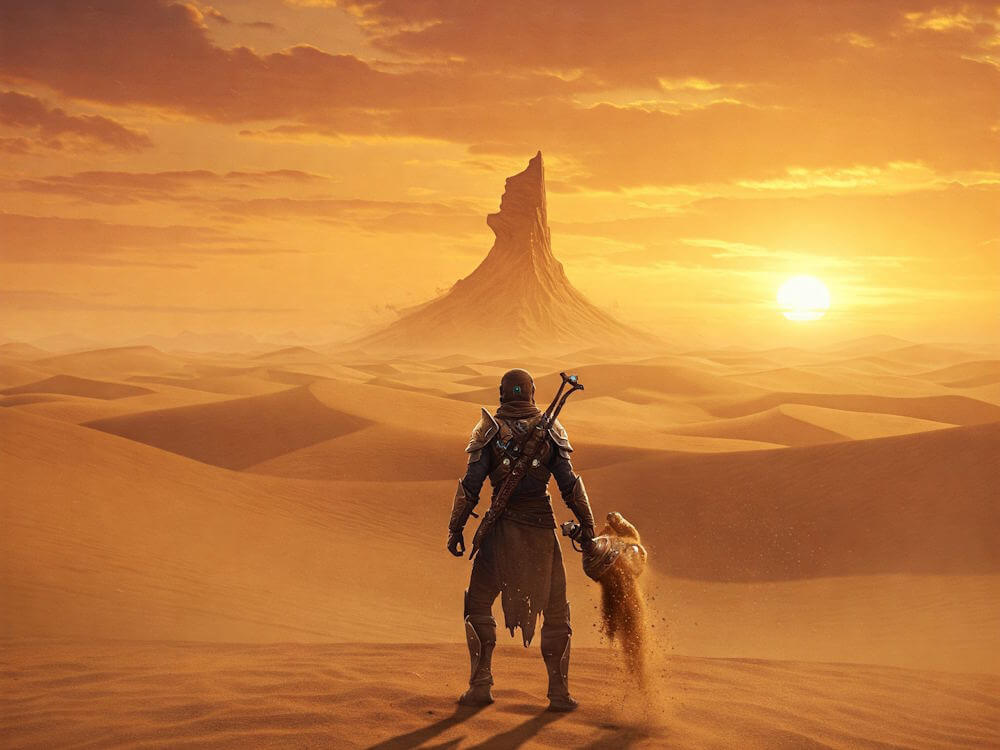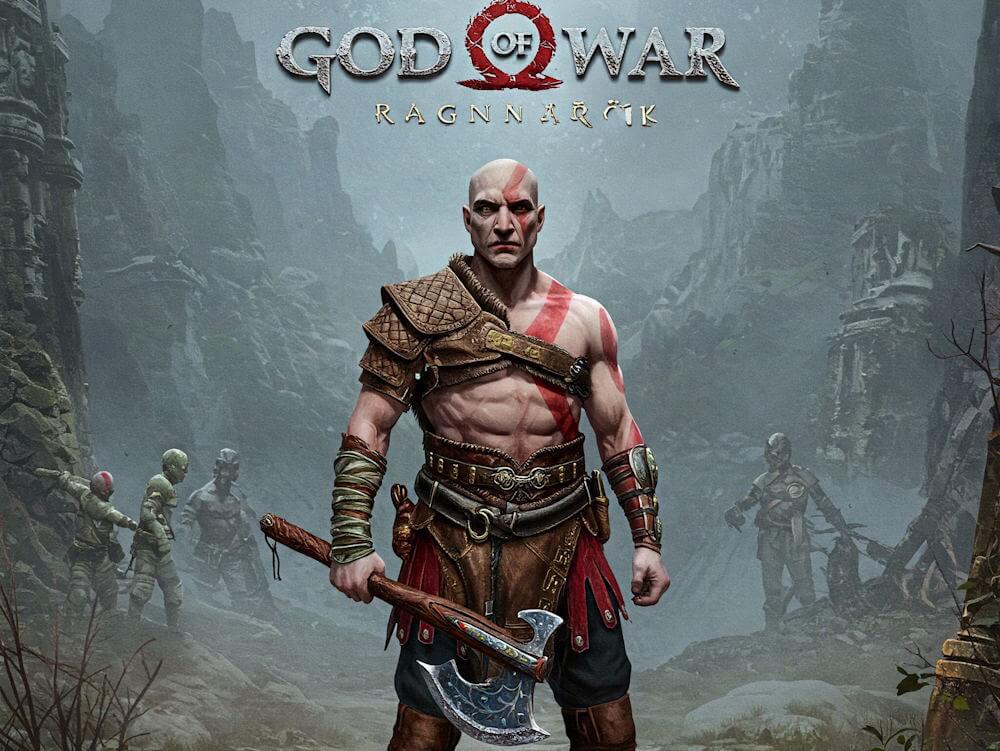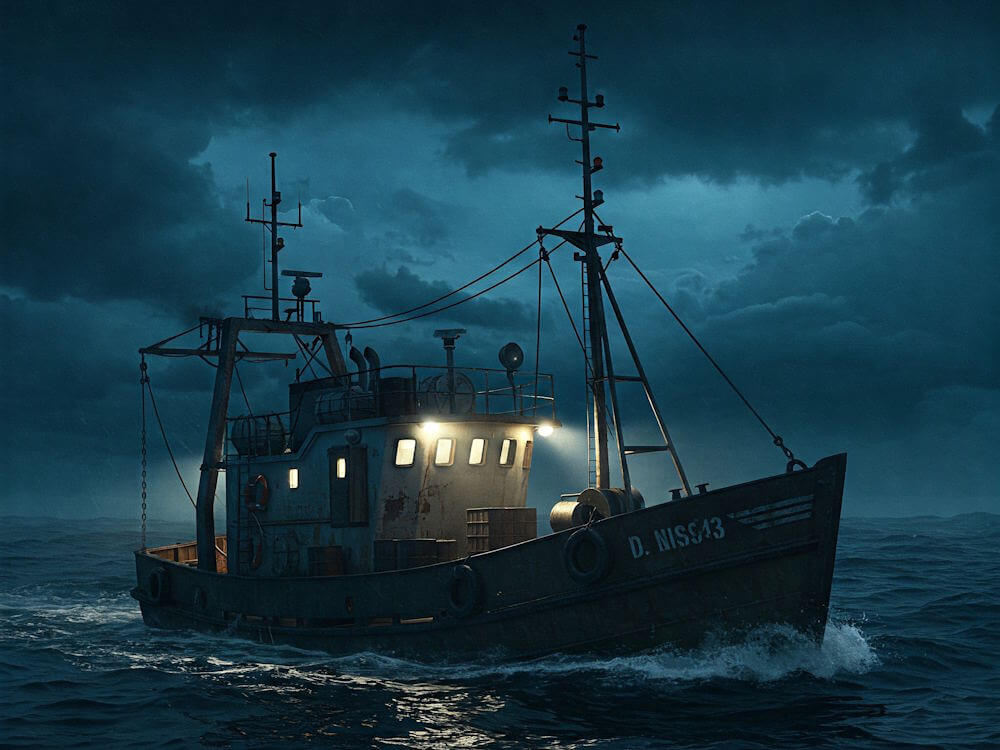Atlas Fallen is an innovative action role-playing game that transports players to a captivating world defined by rolling sands and ancient secrets. Set in a breathtaking environment, the game explores themes of exploration, combat, and survival, all interwoven with an engaging narrative. Players embark on an epic journey through a stunning landscape adorned with mythical creatures and relics of a bygone civilization. The game uniquely positions itself within the RPG genre by offering an immersive experience that challenges players’ combat skills and strategic thinking.
The premise of Atlas Fallen revolves around a powerful entity that has become a harbinger of destruction. Players are tasked with battling sand-infused creatures while uncovering the mysteries behind the corrupted world. The storyline is not limited to mere survival; it invites players to delve deep into the lore, enhancing the overall engagement with the game. This rich narrative backdrop serves to elevate the thrill of confronting the manifold dangers that lie in wait.
What truly sets Atlas Fallen apart from other action RPGs is its groundbreaking sand combat system. This innovative mechanic allows players to harness the elemental properties of sand, lending itself to a dynamic and fluid combat experience. As players encounter a variety of enemies, they can manipulate the sand to craft tools, unleash powerful attacks, or create barriers for defense. This integration of environmental mechanics keeps the gameplay fresh, encouraging players to adopt different strategies as they adapt to the diverse challenges presented.
Developed by skilled teams committed to redefining gameplay, Atlas Fallen is poised to make waves in the gaming community. With a focus on creativity and freedom in combat, this game encourages both casual and hardcore gamers to engage with its unique features and intricate world. As the exploration of combat mechanics will be expanded upon in subsequent sections, the foundational elements of Atlas Fallen offer an exciting preview of what players can expect in this innovative title.
The Importance of Combat in Atlas Fallen
Combat in Atlas Fallen serves as a fundamental pillar of gameplay, intricately woven into the very fabric of the game’s identity. As players navigate through the vast landscape, they encounter a variety of challenges that compel them to engage in strategic confrontations. The mechanics of combat not only promote interaction with the environment but also enhance storytelling by establishing context and urgency within the narrative. Each encounter is designed to highlight the player’s skills and adaptability, presenting obstacles that require both tactical prowess and quick reflexes.
The significance of combat is further underscored by its role in character development. As players progress, they uncover deeper layers of their characters, shaped by their experiences in battle. The choices made during combat scenarios influence the growth of the protagonist, revealing traits and abilities that contribute to their evolution throughout the game. This multifaceted progression fosters a connection between the player and their character, making every victory and setback a meaningful part of the journey.
Moreover, combat mechanics in Atlas Fallen are meticulously crafted to enhance player engagement. By incorporating dynamic elements, such as unique weaponry and diverse enemy types, the game sustains a level of excitement that keeps players invested. Additionally, the fluidity of combat encourages experimentation, allowing players to devise various strategies to overcome formidable foes. Thus, combat transcends mere gameplay; it becomes a vital experience that fosters player immersion and emotional investment.
In essence, the mechanics of combat in Atlas Fallen are not simply a means to an end. They are a core aspect that enriches the overall experience, driving the narrative forward while ensuring that players remain actively engaged. The interplay of combat with storytelling and character evolution solidifies its position as a central element of the game, ultimately enhancing its appeal in a crowded gaming landscape.
Understanding Sand Combat Mechanics
In Atlas Fallen, the innovative combat mechanics revolve around the unique properties of sand, which serves both as a resource and a weapon in battle. Players engage in dynamic encounters by harnessing sand’s versatile capabilities, allowing for a range of offensive and defensive strategies. Sand not only forms the foundation of the game’s combat system but also shapes interactions with the environment, lending a distinct identity to each confrontation.
The sand itself acts as a pivotal resource that players manipulate to execute various attacks. By absorbing sand particles from the surroundings, players can utilize them to create weapons of diverse forms and functions. These weapons can vary from swift strikes to heavy blows, catering to different combat styles and preferences. Moreover, players have the ability to summon sandstorms or generate barriers, providing layers of strategy and depth to the encounters, thereby enhancing the overall gameplay experience.
Different weapon types in Atlas Fallen are intrinsically linked to the sand mechanics, each showcasing unique attributes powered by sand. For instance, players may wield blades that change form through the manipulation of sand, resulting in powerful devastating attacks or swift evasive maneuvers. This adaptability encourages players to experiment with various combinations, making every battle feel distinct and rewarding.
Additionally, the implementation of sand-based abilities introduces an extra dimension to gameplay. By mastering these abilities, players can unleash devastating area-of-effect attacks or deploy defensive mechanisms, altering the battlefield to their advantage. The interplay of strategic decision-making and reflexes becomes essential as players navigate through challenging combat scenarios, transforming encounters into intricate puzzles that demand both skill and creativity.
By engaging with the unique sand combat mechanics, players find themselves immersed in an arena where environmental manipulation meets strategic combat, ultimately defining the overall narrative structure of Atlas Fallen.
Weapon Customization and Skill Progression
In “Atlas Fallen,” players are presented with a robust system of weapon customization and skill progression, allowing them to tailor their combat experience according to their unique playstyle. The game encourages exploration of various combat strategies by providing diverse options that can significantly alter the effectiveness of weaponry and the skills that accompany them. Through an extensive upgrade system, players can enhance their arsenal, adding modifications that improve both damage output and functionality.
The customization begins with an array of weapons, each possessing distinct attributes. Players can choose from swift daggers, formidable swords, or powerful hammers, depending on their preferences. Each weapon type can be modularly enhanced using resources gathered throughout the game’s rich environments. As players progress, they can acquire various upgrades—ranging from elemental enhancements, which imbue weapons with different properties, to optimized handling that increases attack speed or reduces cooldown times. This flexibility allows for a personalized combat experience, making every encounter feel unique.
Furthermore, the skill progression system plays a crucial role in reinforcing different playstyles. Players gain experience through combat and exploration, allowing them to unlock new abilities and powers, which can be combined with their chosen weapons. The skills span from defensive techniques that increase a player’s survivability to offensive capabilities that boost damage output or area-of-effect attacks. As these skills level up, players can create synergies between their weapon choices and skill sets, crafting a dynamic combat style that evolves with the game’s challenges.
This dual-layer of customization not only empowers players to adapt their strategies but also adds depth to the overall gameplay experience, making each decision count. By infusing creativity into weapon selection and skill enhancement, “Atlas Fallen” elevates sand combat mechanics to a new level, providing players the tools necessary to overcome increasingly complex adversaries.
Combining Skills for Strategic Combat
In the dynamic world of Atlas Fallen, mastering combat mechanics is crucial for success in battles. One of the most effective strategies players can employ is the combination of different skills and abilities to create powerful combos. By understanding how each skill interacts with the others, players can develop unique tactics that significantly enhance their combat performance.
Players are encouraged to experiment with their skill sets, as each combination can yield varying results depending on the circumstances of the fight. For instance, using a high-damage skill followed by a crowd-control ability can effectively incapacitate multiple enemies, allowing players to consecutively execute additional attacks without interruption. This approach not only maximizes damage dealt but also minimizes the threat posed by enemy forces.
Moreover, incorporating elemental advantages can augment tactical diversity. Players can align their abilities based on the elemental weaknesses of opponents. For example, utilizing fire-based skills against ice-themed enemies maximizes effectiveness and can lead to critical hits. This strategic decision-making within the heat of combat allows for a more immersive experience, as players must continuously adapt to changing conditions on the battlefield.
Another aspect to consider is the timing and execution of combo skills. Effective coordination among teammates can amplify these strategies significantly. Team members can synchronize their abilities to create devastating chain reactions, resulting in overwhelming power against adversaries. For example, one player could initiate a powerful area-of-effect skill while another prepares a follow-up attack that capitalizes on the chaos created. The resultant synergy not only enhances combat efficiency but also fosters a collaborative gameplay atmosphere.
Ultimately, the heart of Atlas Fallen’s combat mechanics lies in the creativity and adaptability players bring to their skill combinations. By taking the time to understand the nuances of their abilities and experimenting with various strategies, players can unveil the true potential of their combat capabilities and elevate their gameplay experience to new heights.
Enemy Types and Combat Challenges
In Atlas Fallen, players encounter a diverse array of enemy types, each presenting unique challenges that necessitate different combat strategies. Understanding the characteristics of these adversaries is critical for successfully navigating the game’s immersive battle sequences. One prominent faction is the Stone Guardians, formidable foes that boast high defense and strong melee attacks. Their slow, deliberate movements can be deceiving, as they are capable of unleashing devastating burst attacks when least expected. To defeat the Stone Guardians, players must exploit their slow recovery times after performing powerful moves, allowing for windows of opportunity to strike.
Another significant group players will face is the Sand Wraiths. These agile opponents can phase in and out of the sand, making them challenging to hit. Their attacks are primarily ranged, utilizing projectiles that can overwhelm unprepared players. Here, an effective combat strategy may involve using mobility skills to dodge while preparing counterattacks when they reappear. Recognizing patterns in their teleportation behavior is crucial for managing engagements against these elusive foes.
The Corrupted Beasts represent another complex enemy faction. They are characterized by their unpredictable movements and a diverse set of attacks that involve both melee and area-of-effect damage. These beasts often call upon smaller minions to assist them in battle, transforming encounters into multifaceted challenges. Players will need to prioritize targets and adapt their strategies accordingly, often switching weapons or abilities to manage the ebb and flow of combat effectively.
Each enemy type in Atlas Fallen not only adds to the game’s combat diversity but also invites players to continually refine their strategies. Mastering these combat challenges is vital for progression and ultimately enhances the overall gaming experience.
Boss Fights and Their Significance
In any action-adventure game, boss fights serve as pivotal encounters that test the player’s skill and understanding of game mechanics. In Atlas Fallen, these battles are not only designed to challenge players but also to enhance the overall narrative experience. Each boss encounter stands as a unique testament to the game’s dynamic combat mechanics, offering intricate challenges that require thoughtful strategies and adaptability.
The design of bosses in Atlas Fallen showcases a blend of creativity and complexity. Each unique enemy embodies a different aspect of the game’s themes, often representing formidable forces shaped by the desert environment. Players encounter bosses that utilize a variety of attack patterns and abilities, compelling them to adapt their strategies in real-time. For instance, certain bosses may require the player to leverage specific sand-powered abilities, emphasizing the importance of mastering the game’s mechanics and resource management. This interplay showcases how the boss fights are intricately connected to the core gameplay experience.
Effective strategies are crucial for overcoming these encounters. Players must analyze the bosses’ attack patterns, strengths, and weaknesses, often necessitating a steep learning curve. Furthermore, the addition of environmental elements—such as shifting sands and hidden dangers—adds layers of complexity that enhance the thrill of each fight. As players progress, they are rewarded not only with the satisfaction of defeating a challenging foe but also with advancements in their character’s abilities and story revelations that deepen the immersive experience.
Ultimately, the boss fights in Atlas Fallen exemplify a well-crafted gaming experience, where each encounter contributes significantly to character development and plot progression. By facing these formidable opponents, players not only hone their skills but also engage in a narrative that challenges their understanding of the world around them.
The Role of Environment in Sand Combat
In the realm of Atlas Fallen, the environment plays an integral role in shaping combat mechanics, particularly within sand combat. The diverse terrains players encounter significantly impact both their strategies and outcomes during engagements. For instance, shifting sands can change the battlefield in real-time, creating obstacles or opportunities that necessitate quick thinking and adaptability. Players must remain vigilant, as the terrain can shift underfoot, altering their approach to warfare.
Weather conditions also contribute to the combat dynamics in the sandy world of Atlas Fallen. For example, during a sandstorm, visibility decreases, affecting target acquisition and increasing reliance on sound cues and anticipated enemy movements. This necessitates not only a strong grasp of one’s own abilities but also a keen awareness of how foes might exploit the reduced visibility to launch surprise attacks. Thus, understanding the interplay between combat tactics and environmental factors becomes essential for survival.
Furthermore, dynamic sand movements add another layer of complexity to the combat experience. As players engage with enemies, the interaction with malleable sand can lead to unexpected advantages or disadvantages. For instance, players may harness environmental elements to create barricades or trap foes, utilizing the ever-changing landscape to outmaneuver adversaries. These strategies highlight the importance of environmental awareness as players navigate through battles, showcasing that success often hinges on the ability to leverage immediate surroundings.
Ultimately, the interaction between the player, their enemies, and the environment in Atlas Fallen is what makes sand combat both complex and exhilarating. Engaging with the environment thoughtfully can often be the difference between victory and defeat, emphasizing the need for players to remain acutely aware of their surroundings during combat. This immersive experience ensures that every sand-filled encounter is not just a test of strength but also a strategic challenge influenced by a dynamic landscape.
Conclusion: The Future of Combat in Atlas Fallen
In reviewing the combat mechanics presented in Atlas Fallen, it is evident that the innovative sand combat system fundamentally alters player interactions within the game. Players are encouraged to harness the fluidity and versatility that comes from manipulating sand to enhance their combat strategies. The ability to sculpt and wield sand not only allows for unique attacks and defenses but also introduces a layer of creativity that challenges conventional combat paradigms.
Furthermore, as the game continues to evolve, there is potential for future updates that may expand upon the existing mechanics. New abilities, enhancements, and perhaps entirely new forms of combat could emerge, keeping players engaged and enhancing the gameplay experience. The engagement with the environment — using sand to create barriers, launch offensive strikes, or even alter landscapes during battles — presents opportunities for developers to build upon and refine these mechanics over time.
Encouraging players to embrace these unique systems is crucial for fully appreciating what Atlas Fallen has to offer. Mastery of the sand mechanics not only promotes a deeper understanding of the combat landscape but also encourages the development of personal combat styles that cater to individual preferences. As more players engage with the game, discussion surrounding strategies and techniques will flourish, contributing to a vibrant gaming community.
In summary, the combat mechanics in Atlas Fallen, particularly the innovative use of sand, offer an exhilarating experience that is poised for growth. As players adapt to and explore these systems, they will contribute to a rich tapestry of combat that stands as a hallmark of the game. Embracing the sand mechanics will not only enhance the gameplay experience but also pave the way for a deeper appreciation of Atlas Fallen’s diverse combat landscape.




